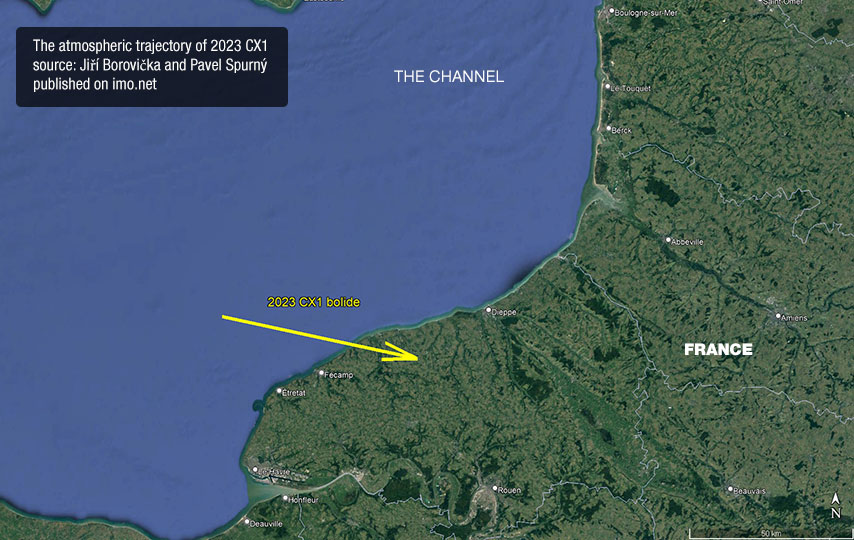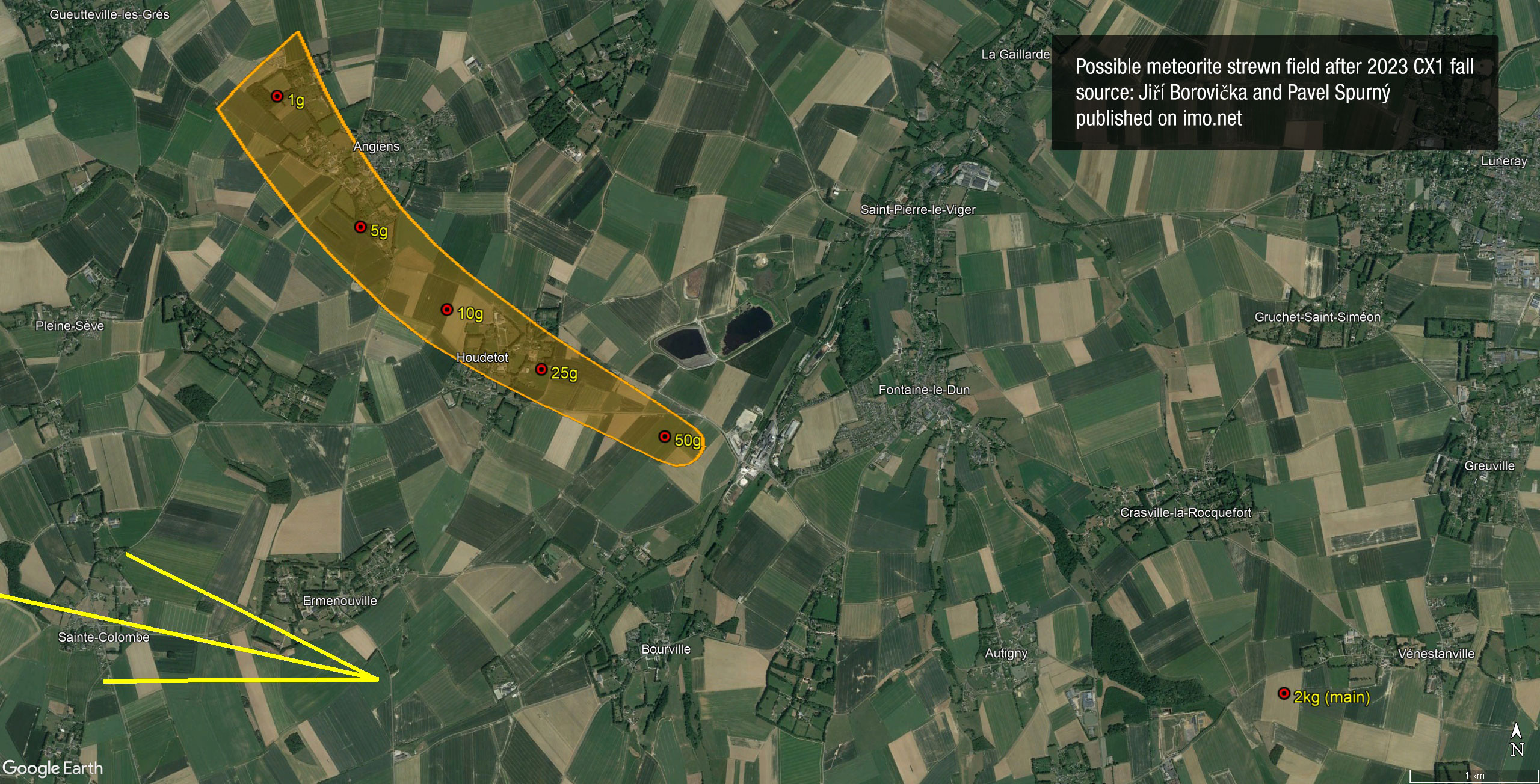We used publicly available images of the fireball caused by the atmospheric entry of the asteroid 2023 CX1 to calculate the fireball trajectory. The images were found on the IMO website and on social media. Namely, the images taken by Gijs de Reike, Calvin Musch (both taken near Boxtel, the Netherlands), Ewan A. (Garches, France), and Hensie Pieper (Kerkrade, the Netherlands) were used. In addition, the video record from a surveillance camera located in Perros-Guirec, France, downloaded from Youtube, was used. A rough light curve was also constructed from the video. The light curve was combined with the radiometric record obtained through clouds by the European Fireball Network camera located in Tautenburg, Germany. The radiometer recorded the fireball light only around the fireball maximum.

The ground projection of the trajectory is plotted in Fig. 1. The fireball was first recorded at a height of 89 km. The maximum brightness was reached in a narrow peak at a height of 27.3 km and the fireball disappeared at a height of 20 km. The radiant had an azimuth of 282.3 degrees and zenith distance of 41.4 degrees. The modeling of the light curve suggests that the meteoroid suffered little fragmentation before it reached the height of 29 km. At that height, a fragmentation event occurred, followed by even more destructive fragmentation at 28 km. During these events, most of the meteoroid disrupted into small fragments, which evaporated very quickly. Probably only one large piece, of a mass of about 3 kg, emerged and could have later landed as a ~2 kg meteorite. We guess that an uncertain number of small meteorites of masses up to several tens of grams, which originated in the disruption events, could land as well.

Figure 2 shows the possible meteorite strewn field. The dark flight was computed using the high altitude wind measurements by the radiosonde in Herstmonceux, UK, at 0 UT on Ferbruary 13 (downloaded from the website of the University of Wyoming). The largest meteorite is expected fo fall near the village of Vénestanville. Small meteorites may be located near Houdetot and Angiens. It cannot be excluded that some individual fragments could be found also in between the large and small meteorite areas, especially if the largest piece fragmented additionally at a later stage (possibly even during the dark flight). Also, the small meteorite area may be wider than plotted. The strewn filed calculations can be further improved in the future by using a wind model for the given location and time. The most interesting aspect of 2023 CX1 is that this large meteoroid/small asteroid, which entered the atmosphere at favorably low speed (14 km/s) and moderate entry angle, probably produced only small total mass of meteorites. Note that the masses given here have been computed under the assumption of meteorite density corresponding to ordinary chondrites. If the meteorite density was lower, the masses, especially that of the largest fragments, can be higher. Nevertheless, it will still be only a small fraction of the initial mass (of the order of 1000 kg).
Acknowledgments: We thank Lukáš Shrbený and Hans Betlem for their help with collecting images and videos of the fireball.
Authors: Jiří Borovička and Pavel Spurný
Affiliation:
Astronomical Institute of the Czech Academy of Sciences,
Department of Interplanetary Matter, Group of Meteor Physics.
Address:
Astronomical Institute of the Academy of Sciences
Ondrejov Observatory
Fricova 298
CZ – 251 65 Ondrejov
Czech Republic




 You saw something bright and fast? Like a huge shooting star? Report it: it may be a fireball.
You saw something bright and fast? Like a huge shooting star? Report it: it may be a fireball.  You counted meteors last night? Share your results with us!
You counted meteors last night? Share your results with us!  You took a photo of a meteor or fireball? You have a screenshot of your cam? Share it with us!
You took a photo of a meteor or fireball? You have a screenshot of your cam? Share it with us!  You caught a meteor or fireball on video? Share your video with us!
You caught a meteor or fireball on video? Share your video with us!
One comment
Let’s see what will happen next